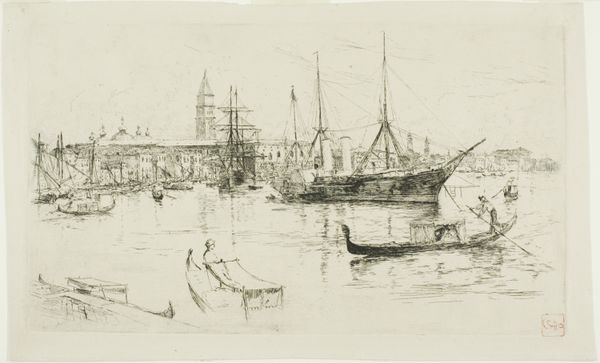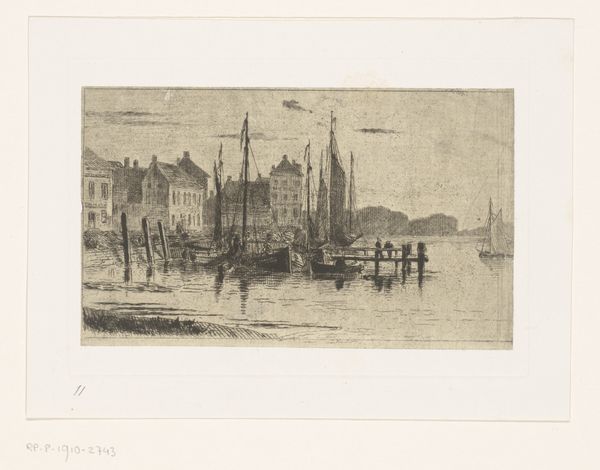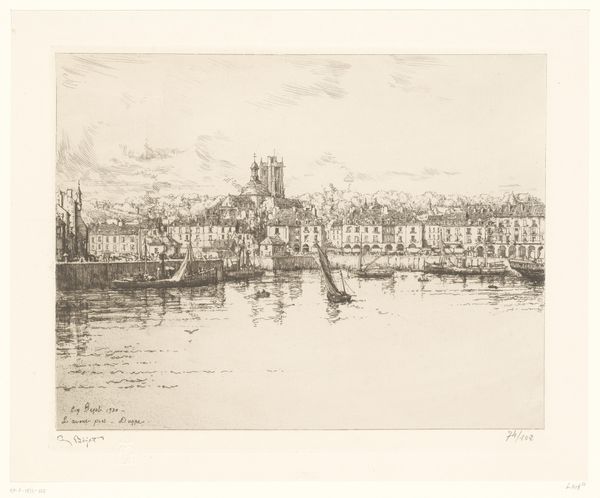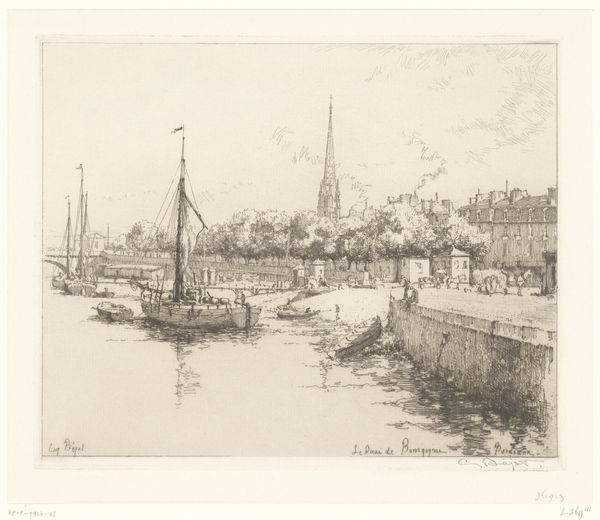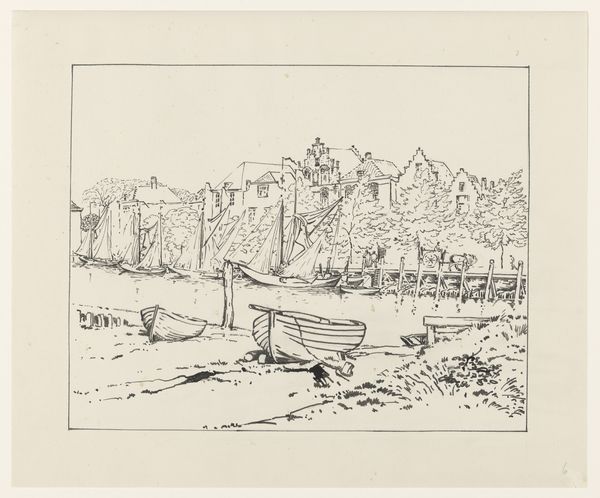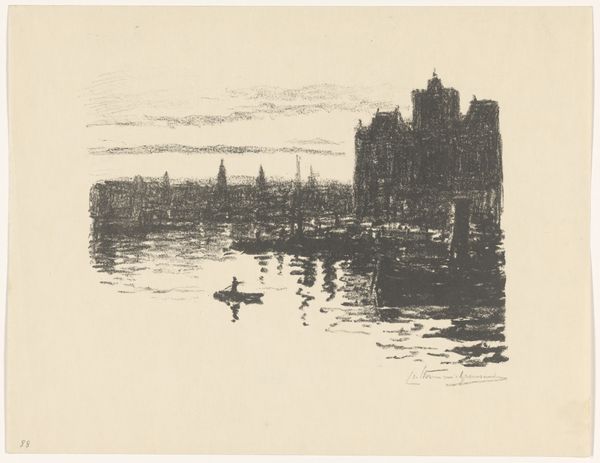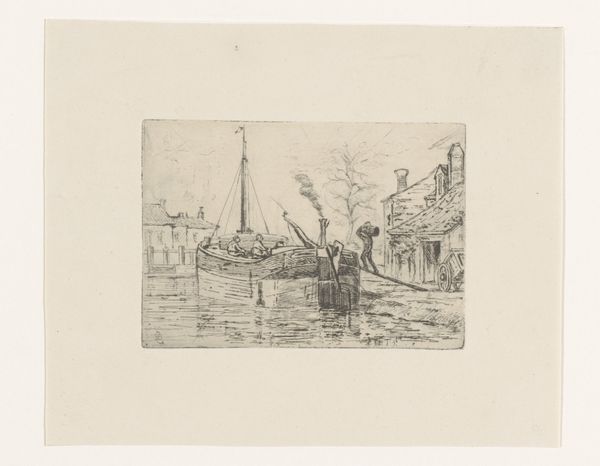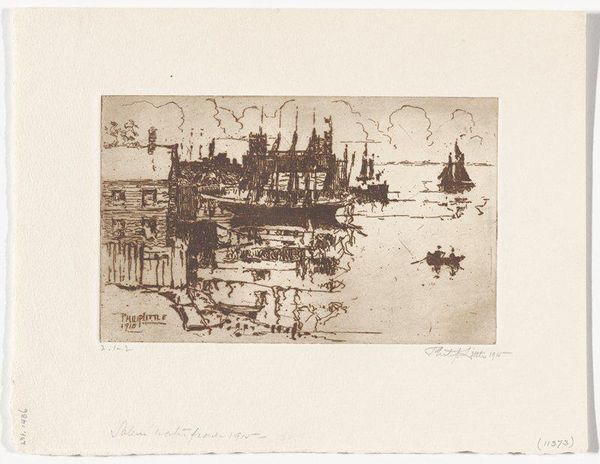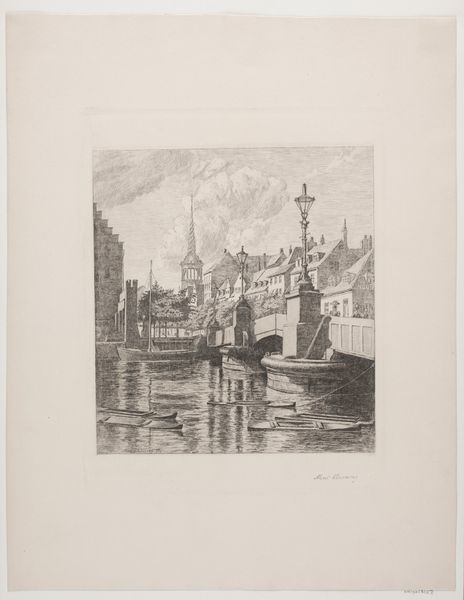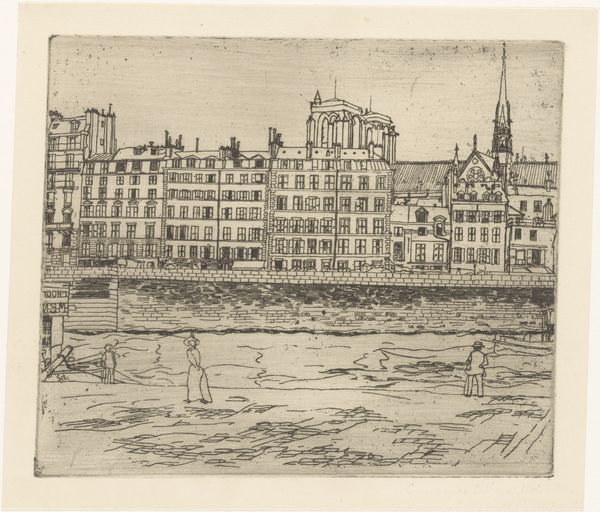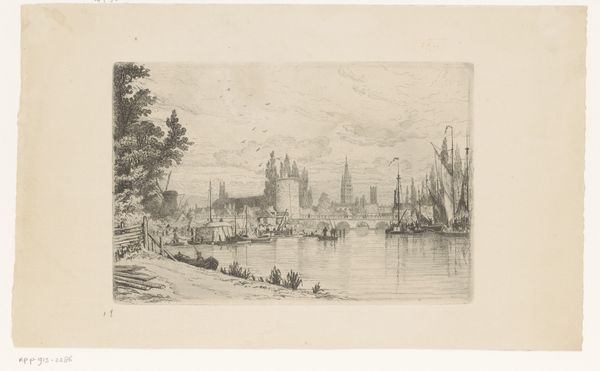
De huizen 't Lammetje of Het Schotse Huis en De gulden Struijs aan de kade te Veere 1883 - 1940
0:00
0:00
drawing, paper, ink
#
landscape illustration sketch
#
drawing
#
narrative-art
#
mechanical pen drawing
#
pen illustration
#
pen sketch
#
old engraving style
#
landscape
#
paper
#
ink line art
#
linework heavy
#
ink
#
geometric
#
pen-ink sketch
#
line
#
pen work
#
cityscape
#
storyboard and sketchbook work
#
realism
Dimensions: height 312 mm, width 371 mm
Copyright: Rijks Museum: Open Domain
Curator: Looking at this drawing by Johannes Frederik Engelbert ten Klooster, created sometime between 1883 and 1940, I'm struck by how precisely he captures the details of the houses and ships on the quay. There's something so calming about its geometric organization and crisp lines. What do you see? Editor: At first glance, there’s an unsettling tension between idyllic imagery and implicit social hierarchies. I’m drawn to the people on the walkway, they almost seem frozen—passive spectators perhaps of Veere's maritime past and commercial endeavors. There is a romantic view on its face, but its context is much more fraught. Curator: Interesting. I hadn’t immediately considered a political dimension to this particular cityscape. I see more of a straightforward representational piece, maybe influenced by earlier topographical studies intended to faithfully render buildings, townscapes, and, indeed, architectural symbolism. Editor: Perhaps, but it also carries traces of the complicated relationship between port cities and maritime commerce, particularly in this time frame. How do we untangle nostalgic aesthetics from their entanglement with economic and socio-political realities? The symbols embedded in those grand old buildings and those ships suggest a culture sustained by exploitative economic policies and potentially, global inequities. Curator: That's quite a reading, I must say! I suppose those houses could symbolize power, but it looks more like a simple, representational reality. I believe Ten Klooster just wants to document these architectural landmarks. If we look deeper into their placement we can start to read them. These houses 't Lammetje and Het Schotse Huis both speak to this specific Dutch location that carries history in itself, the artist seems to have had an appreciation of architectural achievements more than an active message of inequities, even if, as you mentioned, that reading is completely valid in our present time. Editor: Valid precisely because such spaces still stand, laden with those histories. By overlooking this dimension, we risk sanitizing history—we ignore the voices that have historically been unheard or actively suppressed by visual representations like these, with an eye cast towards "innocent" traditions and landscapes. Curator: Well, on that note, this certainly shows the complex layers inherent within seemingly simple landscape drawing! Editor: Exactly. And hopefully that prompts us to approach such works with both a critical eye and open heart, acknowledging how past informs the present.
Comments
No comments
Be the first to comment and join the conversation on the ultimate creative platform.

